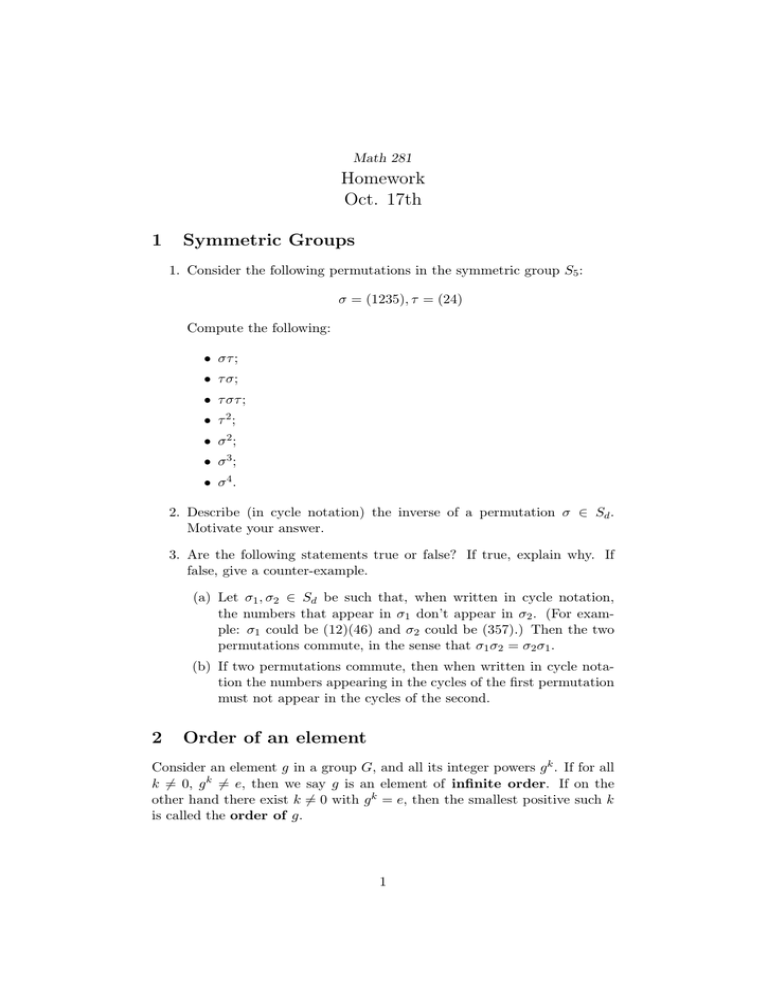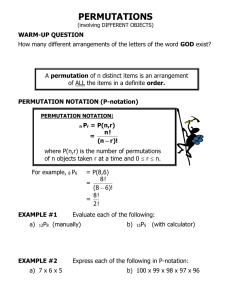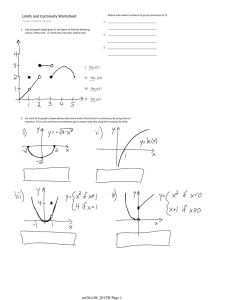Homework Oct. 17th 1 Symmetric Groups
advertisement

Math 281
Homework
Oct. 17th
1
Symmetric Groups
1. Consider the following permutations in the symmetric group S5 :
σ = (1235), τ = (24)
Compute the following:
• στ ;
• τ σ;
• τ στ ;
• τ 2;
• σ2;
• σ3;
• σ4.
2. Describe (in cycle notation) the inverse of a permutation σ ∈ Sd .
Motivate your answer.
3. Are the following statements true or false? If true, explain why. If
false, give a counter-example.
(a) Let σ1 , σ2 ∈ Sd be such that, when written in cycle notation,
the numbers that appear in σ1 don’t appear in σ2 . (For example: σ1 could be (12)(46) and σ2 could be (357).) Then the two
permutations commute, in the sense that σ1 σ2 = σ2 σ1 .
(b) If two permutations commute, then when written in cycle notation the numbers appearing in the cycles of the first permutation
must not appear in the cycles of the second.
2
Order of an element
Consider an element g in a group G, and all its integer powers g k . If for all
k 6= 0, g k 6= e, then we say g is an element of infinite order. If on the
other hand there exist k 6= 0 with g k = e, then the smallest positive such k
is called the order of g.
1
1. Prove that all non-zero elements of (Z, +) have infinite order. Remember here that you are using additive notation, and hence g k really
means g + g + . . . + g, k times.
2. Prove that if g ∈ G is an element of order k, then for any integer
multiple of k, g nk = e.
3. Consider a permutation σ ∈ Sd . Can you describe the order of σ in
terms of its cycle notation?
4. Prove that the set hgi := {g k : k ∈ Z} is a subgroup of G. This is
called the cyclic subgroup generated by g
5. What is h(1234)i? And h(124)(56)i?
2





